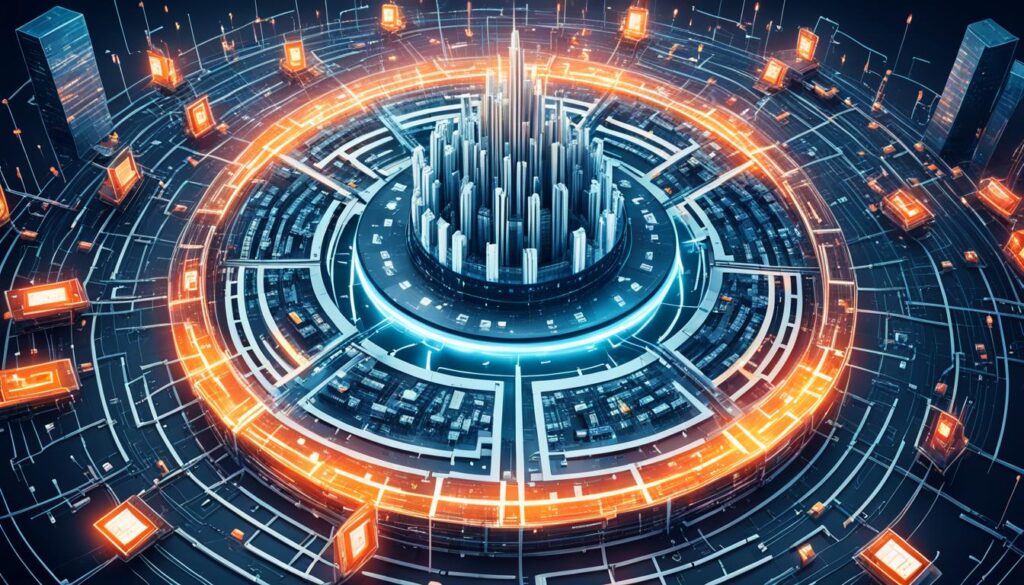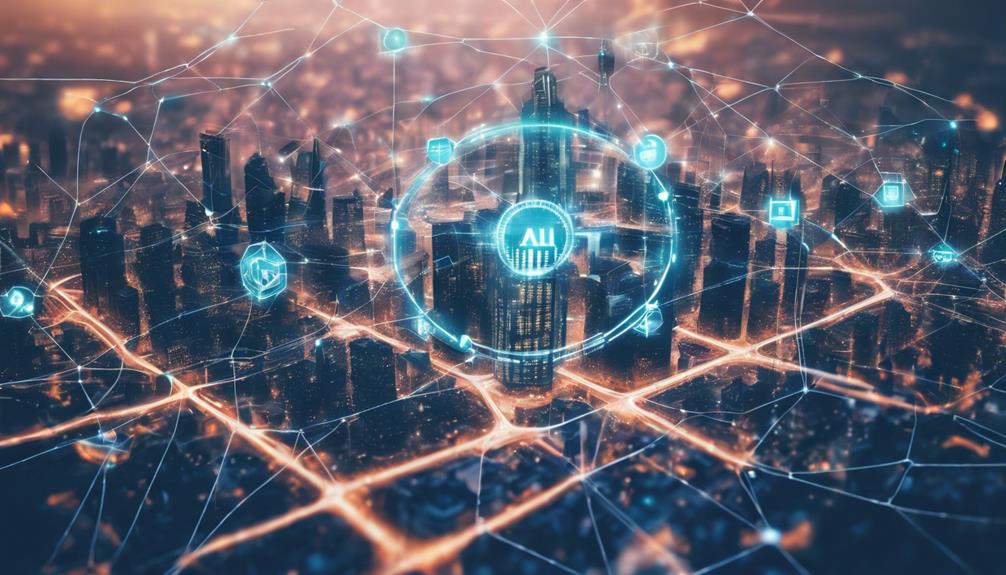In today’s interconnected world, organizations face an ever-increasing number of cyber threats. With 43% of data breaches caused by cyber attacks1, and a 67% increase in reported data breaches in the past year alone1, it’s clear that traditional security measures are no longer sufficient. This is where Next-Generation Firewalls (NGFWs) come into play, providing advanced filtering capabilities, application awareness, and user-based policies to protect networks from modern cyber threats.
NGFWs are designed to filter data based on application, presentation, or session layer packet information. They go beyond the capabilities of traditional firewalls, offering features like deep packet inspection, network intrusion prevention, user-aware filtering, and network sandboxing2. This enables NGFWs to deliver enhanced security and comprehensive defense against a wide range of cyber threats.
Recognized as an 11-time industry leader3, Palo Alto Networks holds the top position as the #1 provider of network security solutions3. Their NGFWs, such as the flagship PA-Series, are trusted by over 85,000 customers3. With a range of products catering to various use cases, including Cloud NGFW and Cloud-Native Firewall for AWS3, Palo Alto Networks delivers consistent security controls across different environments, providing reliable protection for thousands of branch offices3.
Regular updates to firewalls and intrusion detection systems are crucial. Businesses that fail to keep their security systems current are 80% more likely to experience a data breach1. NGFWs, with their ability to integrate with threat intelligence feeds, offer proactive defense by rapidly detecting threats and preventing attacks2. By leveraging NGFWs, organizations can enhance their network security and mitigate the risks posed by cyber threats in the digital age.
Key Takeaways:
- NGFWs provide advanced filtering capabilities, application awareness, and user-based policies to enhance network security in the digital age.
- NGFWs go beyond traditional firewalls by incorporating features such as deep packet inspection, network intrusion prevention, and user-aware filtering.
- Palo Alto Networks, an industry leader, offers a range of NGFW products and is trusted by over 85,000 customers.
- Regular updates to firewalls and intrusion detection systems are crucial to patch vulnerabilities and enhance security against cyber threats.
- NGFWs, with their integration with threat intelligence feeds, enable organizations to detect and prevent attacks proactively.
The Firewall Evolution
Traditional firewalls were once effective at monitoring network traffic based on predetermined security rules. However, the cybersecurity landscape has drastically changed with the digital revolution, giving rise to modern cyber threats that traditional firewalls are ill-equipped to handle. As organizations faced increasingly sophisticated attacks, the need for a comprehensive and advanced security solution became evident.
This led to the development of Next-Generation Firewalls (NGFWs), which revolutionized network protection by combining the capabilities of traditional firewalls with advanced security features. NGFWs offer a holistic defense against a wide range of cyber threats, providing organizations with enhanced security in the digital age.
One of the key features that sets NGFWs apart from traditional firewalls is their advanced security capabilities. NGFWs utilize advanced technologies such as Deep Packet Inspection (DPI), Intrusion Detection and Prevention (IDP), and Application Awareness to analyze network traffic at a granular level, ensuring that all aspects of the traffic, including content and context, are thoroughly inspected4. By going beyond the basic source and destination analysis, NGFWs can identify and block harmful traffic patterns and known attack signatures, providing organizations with a robust defense against cyber threats45.
Another crucial aspect of NGFWs is their ability to offer granular control over network traffic. NGFWs enable application awareness, allowing organizations to identify specific applications generating traffic and enforce tailored security policies based on each application’s risk profile45. This level of control ensures that organizations can effectively manage network resources and mitigate potential risks associated with specific applications.
NGFWs also excel in providing user-based security measures and identity authentication. They associate network traffic with individual users, even in mobile or remote work scenarios4. This enables organizations to implement user-centric security policies and gain visibility into user activities, bolstering their overall network security and allowing for tailored security measures.
Integration with Threat Intelligence is another crucial feature of NGFWs. By incorporating threat intelligence feeds, NGFWs can proactively block known threats and indicators of compromise, ensuring that networks are protected against evolving cyber threats45. This real-time threat information helps organizations stay ahead in the constant battle against cybercriminals.
In addition to their advanced security features, NGFWs also enhance security management and operational efficiency. Centralized management consoles provided by NGFWs simplify monitoring and configuration, reducing operational complexity4. This allows organizations to streamline their security management processes and ensures that security policies are effectively implemented and maintained.
Furthermore, NGFWs offer scalability, allowing organizations to adapt to their growth and changing security needs effectively45. Whether it’s accommodating new users or devices, or expanding network infrastructure, NGFWs provide the flexibility and scalability required to support organizations in their cybersecurity endeavors.
As the digital revolution continues to shape the cybersecurity landscape, NGFWs play a critical role in providing enhanced security measures to combat modern cyber threats. Their advanced security features, integration with threat intelligence, granular control, and streamlined management make NGFWs an indispensable part of comprehensive network security in the digital age. By deploying NGFWs, organizations can fortify their cybersecurity defenses and ensure the protection of their networks in an ever-evolving threat landscape.
Next-Generation Firewalls vs. Traditional Firewalls
| Features | Next-Generation Firewalls (NGFWs) | Traditional Firewalls |
|---|---|---|
| Deep Packet Inspection (DPI) | Included | Not included |
| Intrusion Detection and Prevention (IDP) | Included | Basic IDP functionality |
| Application Awareness | Included | Limited application visibility |
| User Identity Authentication | Included | Not included |
| Integration with Threat Intelligence | Included | Not included |
| Granular Control | Provided | Limited control |
| Management Consoles | Centralized | Varies |
| Scalability | Supported | Varies |
Note: The image above illustrates the concept of Next-Generation Firewalls in the context of network security.
What is an NGFW?
Next-Generation Firewalls (NGFWs) are dynamic, multi-functional security devices that go beyond traditional firewalls. They are designed to provide advanced security features that enhance network protection in the digital age.
NGFWs incorporate advanced security features such as Deep Packet Inspection (DPI), Intrusion Detection and Prevention (IDP), Application Awareness, User Identity Authentication, and Integration with Threat Intelligence. These capabilities enable NGFWs to provide a comprehensive defense against modern cyber threats and malicious activities.
They play a crucial role in safeguarding networks from various attack vectors and ensuring the integrity and confidentiality of sensitive data.
NGFWs offer organizations enhanced security measures that go beyond traditional firewalls. For instance, they can block advanced persistent threats (APTs) such as Cozy Bear and Deep Panda6. NGFWs are also capable of blocking advanced malware, providing organizations with an extra layer of defense6.
Additionally, NGFWs provide integrated threat intelligence and options for networking and security automation, empowering organizations to proactively respond to emerging threats and streamline their security operations6.
By deploying NGFWs, organizations have the opportunity to simplify their security operations and move towards a fully realized security operations center (SOC), enhancing their overall network security posture6.
It’s worth noting that NGFW hardware in traditional data centers may face challenges in keeping up with user mobility and the growing trends of cloud adoption6. However, NGFWs can secure local internet breakouts, but organizations may require separate security stacks in each location. This could potentially lead to complexity and increased costs6.
Furthermore, with the increasing prevalence of encrypted web traffic, SSL inspection capabilities provided by NGFWs have become crucial6. These capabilities enable organizations to analyze encrypted traffic and identify potential threats hidden within the encrypted data, enhancing overall network security.
In terms of deployment, there are different types of NGFWs available. Hardware NGFWs are physical appliances primarily used in data centers, offering robust performance and scalability6. Virtual NGFWs, on the other hand, are software-based, providing flexibility and scalability for virtualized and cloud-based applications6. Lastly, cloud-based NGFWs offer third-party firewall services from the cloud, securing cloud-native environments and providing scalability and centralized security management6.

Summary:
Next-Generation Firewalls (NGFWs) are multi-functional security devices that provide advanced security features such as Deep Packet Inspection, Intrusion Detection and Prevention, Application Awareness, User Identity Authentication, and Integration with Threat Intelligence. They enhance network protection by mitigating advanced persistent threats, blocking malware, and simplifying security operations. NGFWs are available in hardware, virtual, and cloud-based forms, catering to diverse deployment needs.
Why NGFW Matters?
Next-Generation Firewalls (NGFWs) offer a wide range of benefits that make them essential in enhancing network security in the digital age. These advanced security solutions provide enhanced security, granular control, user-centric security, streamlined management, and scalability to meet the evolving needs of organizations.
One of the primary reasons NGFWs matter is their ability to provide enhanced security. With cybercrime profitability on the rise and sophisticated cyber attacks becoming increasingly prevalent, organizations need robust defense mechanisms in place. NGFWs protect against various threats, including malware, ransomware, and zero-day attacks, bolstering network security and safeguarding sensitive data.7
NGFWs also offer granular control over network traffic, allowing organizations to define and enforce specific security policies. This level of control ensures that only authorized users and applications can access the network, minimizing the risk of unauthorized access and potential security breaches.8
Furthermore, NGFWs provide user-centric security by implementing security policies based on user identity and role. This approach enables organizations to tailor security measures to different user groups, ensuring appropriate access privileges and enhancing overall network security.8
NGFWs also contribute to streamlined management through centralized consoles. This centralized management enables IT teams to monitor and manage network security policies efficiently, simplifying administrative tasks and reducing the overall management burden.8
Lastly, NGFWs offer scalability to accommodate the evolving security needs of organizations. With Gartner predicting that over 60% of organizations will use multiple types of firewall deployment by 2026, NGFWs provide the flexibility to adapt and scale alongside an organization’s growth. This scalability ensures that network security remains robust even as the organization expands and adopts new technologies.8

Overall, NGFWs matter because they provide enhanced security, granular control, user-centric security, streamlined management, and scalability. By leveraging these advanced security solutions, organizations can strengthen their network defenses, mitigate cyber threats, and safeguard their valuable data.
The Future of Cybersecurity
In the rapidly evolving landscape of cybersecurity, Next-Generation Firewalls (NGFWs) are positioned at the forefront of the digital revolution, playing a pivotal role in protecting businesses and individuals from modern cyber threats. As organizations undergo digital transformation, NGFWs provide robust protection and adaptability, ensuring the security of data, applications, and networks.4
With the increasing frequency and sophistication of cyber-attacks, traditional firewalls are reaching their limitations.5 NGFWs represent a significant leap forward in network security, offering comprehensive protection against a wide range of threats, including malware, ransomware, and zero-day attacks.4
NGFWs go beyond the capabilities of traditional firewalls by incorporating advanced features such as Deep Packet Inspection (DPI) and application awareness.5 DPI allows for in-depth analysis of data packets, enabling the identification of malicious activities at a granular level.5 This feature empowers organizations to enforce security policies based on specific applications’ risk profiles, enhancing overall network protection.5
Integrated Threat Prevention Systems (IPS) in NGFWs monitor network traffic for malicious signatures and patterns associated with cyberattacks, providing a real-time defense mechanism against evolving threats.5 Additionally, NGFWs leverage threat intelligence feeds to proactively block new attack methods by staying updated on the latest threats.5
Centralized management consoles streamline security policy configuration and monitoring, simplifying network security management for organizations of all sizes.5 NGFWs are designed with scalability in mind, accommodating the expansion of networks and adapting to evolving security needs.5 These firewalls prioritize network performance efficiency, ensuring complex security tasks do not slow down network traffic.5 Sandboxing, URL filtering, and Data Loss Prevention (DLP) are additional key features that contribute to the comprehensive security offered by NGFWs.5
NGFWs present numerous benefits, including enhanced visibility and control over applications, simplified management, regulatory compliance, and cost-effectiveness.5 As the digital landscape continues to evolve, NGFWs are seen as the future of network security, providing the necessary robust protection against increasingly sophisticated cyber threats.5
The future of NGFW development holds promising advancements, including the integration of machine learning and artificial intelligence for advanced threat detection.5 Emphasis is also placed on Zero Trust Architecture, cloud-native security solutions, IoT security capabilities, and protection for edge computing environments.5 These developments reflect the ongoing commitment to adapt to the changing cybersecurity landscape and ensure the utmost security in the digital era.5
In conclusion, as the cybersecurity revolution continues, NGFWs stand as a critical component of organizations’ defense strategies in the digital age.4 With their robust protection, adaptability, and advanced security features, NGFWs are indispensable in safeguarding data, applications, and networks from cyber threats in our interconnected world.
Key Trends in NGFW Development
| Trend | Description |
|---|---|
| Integration of machine learning and AI | Next-gen Firewalls leveraging intelligent algorithms for advanced threat detection |
| Zero Trust Architecture | Emphasis on strict access controls and continuous authentication for enhanced security |
| Cloud-native security solutions | NGFWs designed specifically for cloud environments, ensuring seamless protection |
| IoT security capabilities | Adaptation to the unique security challenges posed by the Internet of Things |
| Protection for edge computing environments | Securing the expanding edge computing infrastructure against cyber threats |
Note: The table showcases key trends in NGFW development to meet the evolving cyber threat landscape and enhance network security.

Defining Next-Gen Firewalls
Next-Generation Firewalls (NGFWs) play a crucial role in enhancing network security in the digital age. These advanced security devices go beyond traditional firewalls by incorporating features such as application awareness, integrated intrusion prevention, and cloud-delivered threat intelligence. NGFWs provide a holistic defense against a wide range of cyber threats, making them vital for organizations looking to strengthen their network security defenses.
NGFWs offer several key advantages over traditional firewalls. They can block advanced malware and effectively thwart advanced persistent threats (APTs) like Cozy Bear and Deep Panda6. NGFWs also provide integrated threat intelligence and options for networking and security automation6. This integration allows organizations to stay ahead of emerging threats and respond to them in real time.
However, NGFWs face certain challenges due to hardware limitations. In modern environments, NGFW appliances in traditional data centers struggle to keep up with user mobility and the rapid adoption of cloud services6. This can lead to performance issues and hinder the effectiveness of NGFWs in protecting networks.
Securing local internet breakouts with NGFW hardware can also be complex and costly. Organizations often need to deploy separate security stacks in each location, increasing the overall complexity of their network infrastructure and adding to operational expenses6. This highlights the importance of carefully managing and optimizing NGFW deployments to maximize their effectiveness.
NGFWs come in different form factors for deployment. They include hardware, virtual, and cloud-based solutions. Hardware NGFWs are physical appliances primarily used in data centers, while virtual NGFWs are software-based and suitable for virtualized and cloud-based applications and services6. Cloud-based NGFWs offer third-party firewall services from the cloud, providing increased scalability and centralized security management capabilities6.
Next-Generation Firewalls combine the essential features of traditional firewalls with advanced capabilities, making them an indispensable tool for network security. By understanding the defining attributes and challenges of NGFWs, organizations can make informed decisions when deploying and optimizing their network security infrastructure.

| Form Factor | Deployment | Key Features |
|---|---|---|
| Hardware NGFWs | Physical appliances for data centers | Built-in hardware security acceleration, high-performance packet processing |
| Virtual NGFWs | Software-based, suitable for virtualized and cloud-based apps and services | Scalability, flexibility, easy deployment and management |
| Cloud-based NGFWs | Third-party firewall services from the cloud | Increased scalability, centralized security management |
NGFWs offer diverse deployment options that cater to different network infrastructures and business needs. Whether organizations opt for hardware, virtual, or cloud-based NGFWs, the advanced capabilities of Next-Generation Firewalls contribute significantly to bolstering network security and defending against evolving cyber threats.
Key Features of Next-Gen Firewalls
Next-Generation Firewalls (NGFWs) offer a range of key features that set them apart from traditional firewalls. These features include deep packet inspection, application-layer filtering, intrusion prevention, and integration with threat intelligence feeds. Let’s explore each of these features in detail:
1. Deep Packet Inspection (DPI)
NGFWs employ deep packet inspection to analyze network traffic at a granular level. This enables detailed examination of application specifics, encrypted traffic, source and destination addresses, and even integration with threat intelligence feeds. By inspecting packets in such depth, NGFWs can identify and prevent the entry of malicious content, ensuring robust network security. (Source:2)
2. Application-Layer Filtering
NGFWs provide application-layer filtering capabilities, allowing organizations to control and monitor specific applications within their networks. This granular approach enhances security by enforcing policies tailored to each application’s unique requirements. By gaining visibility into application activity, NGFWs enable organizations to reduce their attack surface and enhance overall security. (Source:2)
3. Intrusion Prevention
NGFWs incorporate intrusion prevention systems to detect and block malicious traffic patterns in real time. These systems monitor network activity for signs of unauthorized access or suspicious behavior, preventing potential data breaches and protecting organizational resources. By integrating intrusion prevention into NGFWs, organizations can enhance their network security posture. (Source:2)
4. Integration with Threat Intelligence Feeds
To facilitate rapid threat detection and prevention, NGFWs seamlessly integrate with threat intelligence feeds. By leveraging real-time information about emerging threats and zero-day vulnerabilities, NGFWs empower organizations to proactively defend against new and evolving cyber threats. This integration ensures that NGFWs stay up-to-date with the latest threat landscape, enhancing their effectiveness as a security solution. (Source:2)
Next-Generation Firewalls play a crucial role in defending networks against modern cyber threats. With their deep packet inspection capabilities, application-layer filtering, intrusion prevention systems, and integration with threat intelligence feeds, NGFWs provide organizations with a robust and comprehensive security solution. By embracing these key features, organizations can strengthen their network security posture and safeguard their valuable assets.
Deep Packet Inspection: Unveiling Hidden Threats
Deep Packet Inspection (DPI) plays a pivotal role in Next-Generation Firewalls (NGFWs) by enabling the detection of hidden threats and sophisticated attack vectors9. By analyzing the content of network packets at a granular level, DPI provides a comprehensive analysis of network activity, going beyond traditional methods that only examine packet headers9.
DPI scrutinizes data not only in the Transport layer but also in the Session layer and Application layer, offering a more detailed and comprehensive analysis compared to traditional packet inspection tools9. This in-depth analysis allows NGFWs to proactively identify known malicious patterns within data packets, aiding in early threat detection and prevention9.
One of the key advantages of DPI is its behavioral analysis capabilities9. By identifying anomalous behaviors such as sudden large data transmissions, DPI can highlight activities that may indicate suspicious or malicious intent9.
In addition to detecting known threats, DPI’s ability to scrutinize packet content in-depth enables it to detect and protect against zero-day attacks that exploit new vulnerabilities9. This is crucial in today’s evolving threat landscape, where new vulnerabilities are constantly being discovered and exploited by cybercriminals.
DPI also offers organizations the ability to enforce content policies by analyzing packet content9. By examining the content within packets, NGFWs can ensure that only appropriate data enters or exits the network, aiding organizations in their compliance efforts9.
Furthermore, when integrated with firewalls, DPI enhances their capabilities by understanding the context, content, and intent of the data being inspected9. This integration enables NGFWs to make more informed decisions and effectively protect against a wide range of threats.
In terms of data leak prevention, DPI can monitor outbound traffic by analyzing patterns or content in the transmitted data9. This allows NGFWs to detect potential data leaks and take necessary measures to prevent unauthorized information from leaving the network9.
Advanced DPI solutions go even further by decrypting, inspecting, and re-encrypting encrypted traffic on-the-fly9. This ensures that threats hidden within encrypted packets are still detected and mitigated effectively, providing comprehensive protection for sensitive data9.

With its ability to unveil hidden threats, detect zero-day attacks, and enforce content policies, Deep Packet Inspection is an essential feature that enhances the effectiveness of Next-Generation Firewalls9. By providing a detailed analysis of network activity, DPI equips organizations with a powerful tool to identify and mitigate potential risks, bolstering their overall network security.
Application-Layer Filtering
Next-Generation Firewalls (NGFWs) offer application-layer filtering, a granular approach that allows organizations to control and monitor specific applications on their network. By implementing application-layer filtering, companies can enhance their overall security posture and reduce the attack surface by enforcing policies tailored to each application.
Application-layer filtering is a key feature of NGFWs that goes beyond the capabilities of traditional firewalls. NGFWs enable organizations to inspect and filter network traffic at the application layer, providing greater visibility into the content and behavior of applications. With this level of control, organizations can prevent unauthorized access, detect potential security threats, and ensure compliance with regulatory requirements.
One of the primary advantages of application-layer filtering is its ability to identify and block application-specific attacks. NGFWs can critically analyze application traffic, detect malicious behavior, and prevent threats from infiltrating the network. This level of security is crucial in today’s digital landscape, where cyber attacks are becoming increasingly sophisticated and targeted.
By implementing application-layer filtering, organizations can protect themselves from various security risks, including data breaches, malware infections, and insider threats. The granular approach allows IT administrators to define specific policies for each application, ensuring that only authorized users can access and utilize them.
Moreover, application-layer filtering enables organizations to control the flow of data within their network. They can prioritize essential applications, allocate bandwidth accordingly, and mitigate the risks associated with resource-intensive applications. This level of control optimizes network performance and ensures uninterrupted business operations.
NGFWs also provide additional security features that complement application-layer filtering. Features such as deep packet inspection, intrusion prevention, user-aware filtering, and threat intelligence integration offer a comprehensive defense against evolving cyber threats. These features enhance overall security by detecting and preventing attacks at multiple levels.
In conclusion, Next-Generation Firewalls with application-layer filtering capabilities offer organizations a granular and effective approach to network security. By controlling and monitoring specific applications, organizations can reduce the attack surface, enhance overall security, and protect against advanced threats. The integration of additional security features further strengthens the overall defense posture.
NGFW Features Comparison
| Firewall Features | Deep Packet Inspection | Intrusion Prevention | User-Aware Filtering | Network Sandboxing |
|---|---|---|---|---|
| NGFW | ✓ | ✓ | ✓ | ✓ |
| Traditional Firewall | – | – | – | – |

Intrusion Prevention Systems (IPS)
Next-Generation Firewalls (NGFWs) incorporate Intrusion Prevention Systems (IPS) to provide real-time threat defense. These systems identify and block malicious activities, preventing unauthorized access and potential data breaches. By having this capability integrated into NGFWs, organizations can enhance their network security6.
IPS appliances, originally stand-alone devices in the mid-2000s, are now integrated into unified threat management (UTM) solutions and NGFWs10. Today’s IPS solutions are also connected to cloud-based computing and network services10.
Anomaly-based detection is a key feature of IPS. It compares network traffic to a pre-calculated baseline performance level to determine deviations10.
Another type of detection employed by IPS is signature-based detection, which includes exploit-facing signatures and vulnerability-facing signatures10.
IPS encompasses different types such as NIPS, HIPS, NBA, and WIPS, each serving a unique purpose within network security10.
Organizations benefit from IPS in various ways. It reduces business risks, provides better attack visibility, increases efficiency, and requires fewer resources for vulnerability management10.
Critical features of IPS include vulnerability protection, antimalware protection, command-and-control protection, automated security actions, broad visibility and control, simplified policy management, and automated threat intelligence10.
Inline deep learning is an advanced technique used by IPS to enhance threat detection accuracy against sophisticated and evasive threats10.
Intrusion prevention systems can be classified into two main types: signature-based detection and statistical anomaly-based detection10.

User and Identity Awareness
Next-Generation Firewalls (NGFWs) offer user and identity awareness, a critical capability that goes beyond traditional IP-based rules. With user and identity awareness, organizations can implement user-centric policies and enhance security in dynamic network environments, even in the presence of mobile and remote work scenarios.
By incorporating user identity authentication capabilities, NGFWs allow for the association of network traffic with specific users. This enables organizations to enforce user-centric policies, granting or restricting access based on individual user identities. This feature is particularly valuable in today’s mobile and remote work settings, where user authentication is paramount in securing network traffic.4
NGFWs play a crucial role in providing granular control over network traffic. Organizations can apply specific policies to applications and users, ensuring enhanced network traffic control. This level of granularity allows for a more fine-tuned approach to network security and ensures that organizational resources are utilized efficiently and securely.4
Furthermore, NGFWs offer streamlined management through centralized consoles. This simplifies monitoring and configuration processes, reducing operational complexity for IT administrators. By consolidating management functions into a unified platform, NGFWs enable efficient and effective security management, saving time and resources for organizations.4
In dynamic network environments, where changes occur frequently due to the introduction of new devices, applications, and user behaviors, NGFWs provide the flexibility required to adapt to evolving security needs. NGFWs are scalable, ensuring that organizations can expand their networks and adjust their security measures accordingly without compromising cybersecurity. This scalability factor is crucial in today’s rapidly changing threat landscape, where the ability to adapt quickly is essential for robust network protection.4
Integration with Threat Intelligence Feeds
Next-Generation Firewalls (NGFWs) are equipped with advanced capabilities that enable integration with threat intelligence feeds, providing organizations with real-time information about emerging threats and zero-day vulnerabilities.11 By seamlessly integrating with these feeds, NGFWs empower organizations to adopt a proactive defense approach, allowing them to stay one step ahead in the ever-evolving cyber landscape.
Threat intelligence feeds deliver up-to-date data on the latest cyber threats, including indicators of compromise (IOCs), malicious IP addresses, and suspicious network patterns. With this valuable information, NGFWs can detect and block malicious traffic faster and more accurately, bolstering the overall security posture of the network.11
By harnessing the power of threat intelligence feeds, organizations can enhance their incident response capabilities. The real-time updates provided by these feeds enable NGFWs to identify and respond to emerging threats promptly, helping to minimize potential damage and mitigate the risk of successful cyberattacks.11
Furthermore, the integration between NGFWs and threat intelligence feeds enables organizations to gain comprehensive situational awareness. By leveraging real-time threat intelligence, NGFWs can identify emerging threats and zero-day vulnerabilities that traditional security measures might miss. This enhanced visibility allows organizations to proactively adapt their defense strategies and make informed decisions to protect their networks.11
Threat intelligence feeds also provide contextual information about cyber threats, helping organizations understand the motivation, tactics, and techniques employed by threat actors. Armed with this knowledge, organizations can enhance their defenses and devise tailored response strategies that are specific to the threats they face.11
In conclusion, the integration of Next-Generation Firewalls with threat intelligence feeds plays a crucial role in proactive defense against emerging threats and zero-day vulnerabilities. By leveraging real-time information and enhanced visibility, organizations can fortify their network security and effectively combat the dynamic and ever-changing cyber threat landscape.11
Conclusion
Next-Generation Firewalls (NGFWs) have emerged as vital tools in enhancing network security in the digital age.4 Traditional firewalls struggled to keep pace with modern cyber threats, leading to the development of NGFWs with advanced security features.4 NGFWs provide comprehensive security, protecting against various threats such as malware, ransomware, and zero-day attacks.4
NGFWs offer organizations advanced capabilities like Deep Packet Inspection (DPI), Intrusion Detection and Prevention (IDP), and application awareness.4 These features enable NGFWs to provide a holistic defense against cyber threats in the digital age.4 They also allow for the implementation of user-specific policies and visibility, tailoring security measures to individual needs.4
Statistics from MarketsandMarkets predict that the NGFW market will reach $7.05 billion by 2021, with a compound annual growth rate of 14.2%.12 Additionally, Gartner forecasts that by 2022, more than 90% of enterprise firewalls will be NGFWs, replacing traditional firewalls.12 These trends highlight the increasing importance of NGFWs in the cybersecurity landscape.12
In conclusion, NGFWs are indispensable for organizations seeking robust network security in the digital age.4 With their advanced features, NGFWs provide comprehensive protection against evolving cyber threats.4 By integrating multiple security functions into one platform, NGFWs simplify management, reduce costs, and improve overall security posture.12 As organizations scale and adapt to changing security needs, NGFWs provide the necessary defenses to safeguard networks and assets in today’s interconnected world.4
FAQ
What are Next-Generation Firewalls (NGFWs)?
How do NGFWs enhance network security?
What is deep packet inspection, and why is it important?
How does application-layer filtering improve network security?
What are Intrusion Prevention Systems (IPS) in NGFWs?
How do NGFWs provide user and identity awareness?
What is the benefit of integrating NGFWs with threat intelligence feeds?
Why are NGFWs crucial for network security in the digital age?
Source Links
- https://moldstud.com/articles/p-enhancing-network-security-with-firewalls-and-intrusion-detection
- https://www.esecurityplanet.com/networks/what-is-a-next-generation-firewall/
- https://www.paloaltonetworks.com/network-security/next-generation-firewall
- https://www.linkedin.com/pulse/next-generation-firewalls-reinventing-cybersecurity-digital-qureshi-klsyc?trk=articles_directory
- https://medium.com/@wasimjee001/next-gen-firewalls-the-future-of-network-security-d1b8448be8c8
- https://www.zscaler.com/resources/security-terms-glossary/what-is-next-generation-firewall
- https://www.fortinet.com/blog/industry-trends/network-firewalls-ngfw-predictions
- https://indeni.com/what-is-a-next-generation-firewall/
- https://www.beforecrypt.com/en/what-is-deep-packet-inspection/
- https://www.paloaltonetworks.com/cyberpedia/what-is-an-intrusion-prevention-system-ips
- https://universalconnectivity.com/ngfw-next-generation-firewalls/
- https://www.v500.com/benefits-of-next-generation-firewalls-for-organisations/









